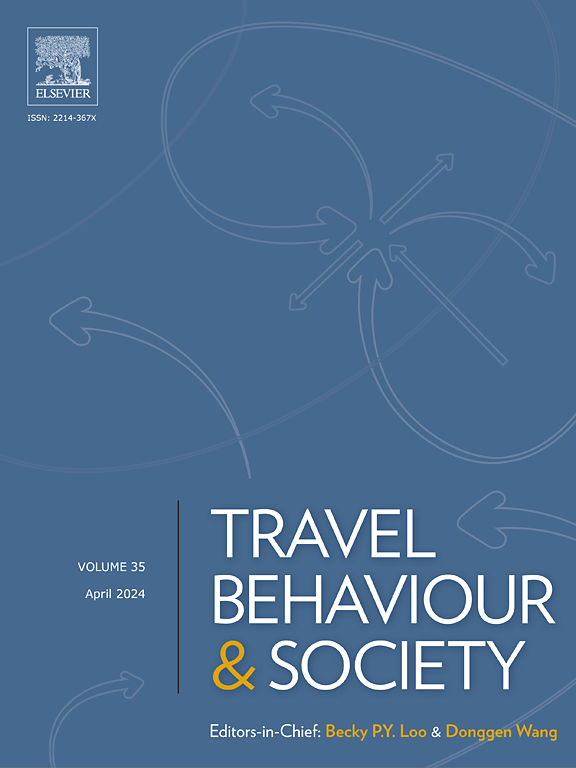Accelerate transit network design problem-solving based on large-scale smart card data and graph-clustering decomposition
IF 5.7
2区 工程技术
Q1 TRANSPORTATION
引用次数: 0
Abstract
Transit network optimization problems, such as the Transit Network Design (TND) problem, are generally difficult to be solved within reasonable computational time, especially for large real-world instances potentially containing thousands of bus stops and millions of stop-level OD pairs. Modifications made in existing TND studies for improving the computational performance could vary across different solution methods, assumptions and problem modeling, raising concerns about their transferability and implementation difficulty. This study presents a general framework to accelerate the TND problem-solving for large instances by decomposing the transit network into smaller subnetworks. We first proposed a modified Louvain algorithm to generate an optimal network partitioning based on transit passenger flows extracted from large-scale smart card data. A solution method (i.e., a Genetic Algorithm, GA) is then implemented to address the TND problem in each subnetwork separately and parallelly, thereby saving much computational time. Transit routes generated and optimized in each subnetwork are then combined into one route set as the solution for the entire transit network. The experiment on a well-known benchmark dataset shows that the proposed method, even incorporated with only a basic version of GA, can yield solutions better than most of its existing competitors with an outstanding computational performance. Moreover, the results indicate that our method could speed up the basic GA nearly 1,000 times faster on the iteration process. Another experiment on a real-world network instance (i.e., the Nanjing bus) shows that our method can optimize the currently operating routes, reducing the average travel time by 18.6% and the number of transfers by 17.7%. Code and data for the implementation of the GCGA framework and metrics calculations are provided at https://github.com/Radar-Lei/TBS-D-2023-00544R1.
基于大规模智能卡数据和图聚类分解加速公交网络设计问题的解决
公交网络优化问题,如公交网络设计(TND)问题,通常难以在合理的计算时间内解决,特别是对于可能包含数千个公交站点和数百万个站点级OD对的大型现实实例。在现有TND研究中为提高计算性能所做的修改可能因解决方法、假设和问题建模的不同而有所不同,这引起了对其可转移性和实施难度的关注。本研究提出了一个通用框架,通过将运输网络分解为更小的子网来加速解决大型实例的TND问题。首先提出了一种改进的Louvain算法,该算法基于从大规模智能卡数据中提取的公交客流生成最优网络划分。然后实现一种求解方法(即遗传算法,GA),分别并行地解决每个子网的TND问题,从而节省了大量的计算时间。然后将在每个子网中生成和优化的公交路线组合成一个路线集,作为整个公交网络的解决方案。在一个知名的基准数据集上的实验表明,即使只结合了基本版本的遗传算法,所提出的方法也能产生比大多数现有竞争对手更好的解,并具有出色的计算性能。结果表明,该方法在迭代过程中可以将基本遗传算法的速度提高近1000倍。另一个现实网络实例(即南京公交)的实验表明,我们的方法可以优化当前运行的路线,将平均行程时间减少18.6%,换乘次数减少17.7%。实现GCGA框架和度量计算的代码和数据可在https://github.com/Radar-Lei/TBS-D-2023-00544R1上获得。
本文章由计算机程序翻译,如有差异,请以英文原文为准。
求助全文
约1分钟内获得全文
求助全文
来源期刊

Travel Behaviour and Society
TRANSPORTATION-
CiteScore
9.80
自引率
7.70%
发文量
109
期刊介绍:
Travel Behaviour and Society is an interdisciplinary journal publishing high-quality original papers which report leading edge research in theories, methodologies and applications concerning transportation issues and challenges which involve the social and spatial dimensions. In particular, it provides a discussion forum for major research in travel behaviour, transportation infrastructure, transportation and environmental issues, mobility and social sustainability, transportation geographic information systems (TGIS), transportation and quality of life, transportation data collection and analysis, etc.
 求助内容:
求助内容: 应助结果提醒方式:
应助结果提醒方式:


